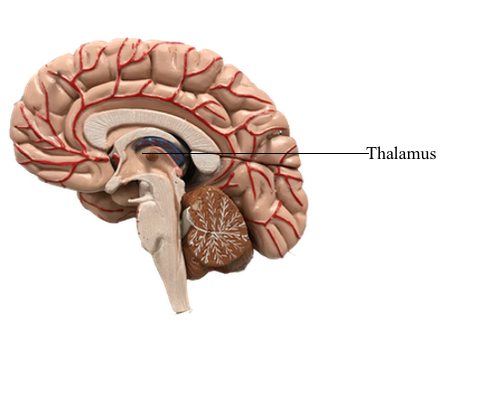Main Model

Diencephalon : 19 Thalamus

Thalamus
The forebrain consists of the cerebral hemispheres, large groups of neurons that comprise the basal nuclei, and the thalamus. The thalamus actually consists of several regions - for example, the hypothalamus, subthalamus, epithalamus, and dorsal thalamus. The thalamus is also commonly called the diencephalon, a term that reflects its embryologic origin.
The thalamus is rostral to the midbrain and almost completely surrounded by elements of the cerebral hemisphere. Individual parts of the thalamus can be seen in detail only when the brain is cut in coronal or axial planes.
With the exception of olfaction, all sensory information that eventually reaches the cerebral cortex must pass through the thalamus. One function of the thalamus, therefore, is to receive sensory information of many sorts and to distribute it to the specific regions in the cerebral cortex that are specialized to decode it. Other areas of the thalamus receive input from pathways conveying information on, for example, position sense or the tension in a tendon or muscle. This input is relayed to areas of the cerebral cortex that function to generate smooth, purposeful movements.
Although it is small, the hypothalamus functions in sexual behavior, feeding, hormonal output of the pituitary gland, body temperature regulation, and a wide range of visceromotor functions. Through descending connections, the hypothalamus influences visceral centers in the brainstem and spinal cord.